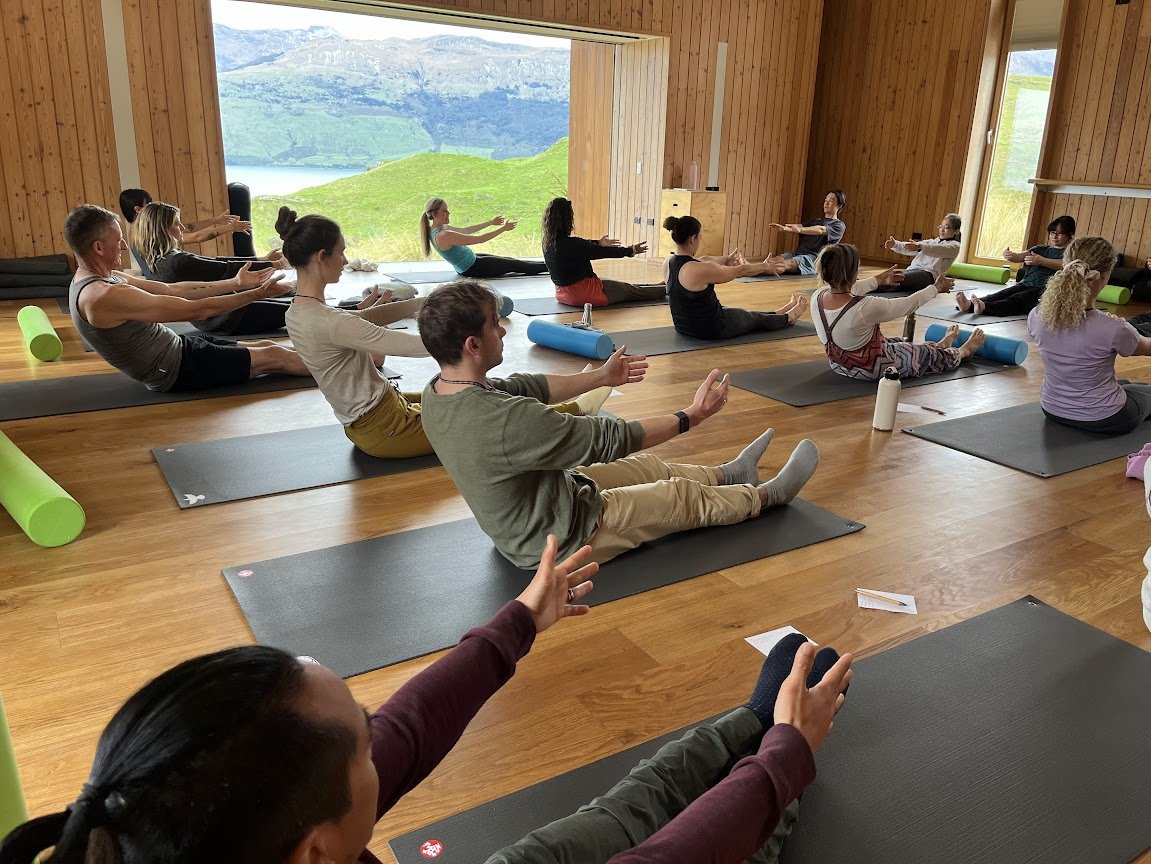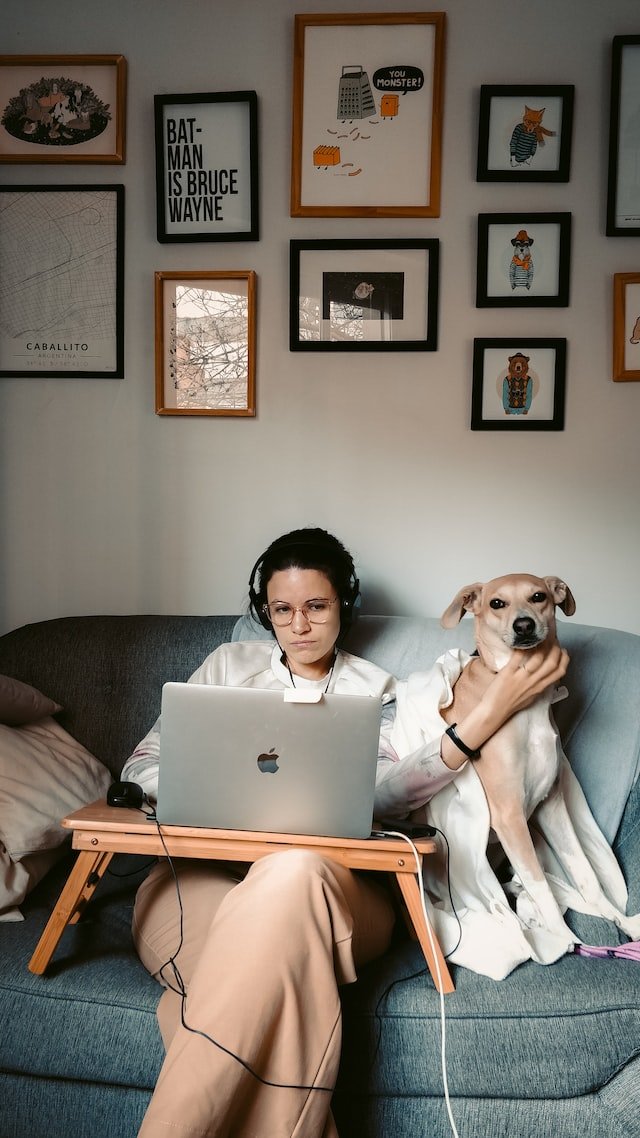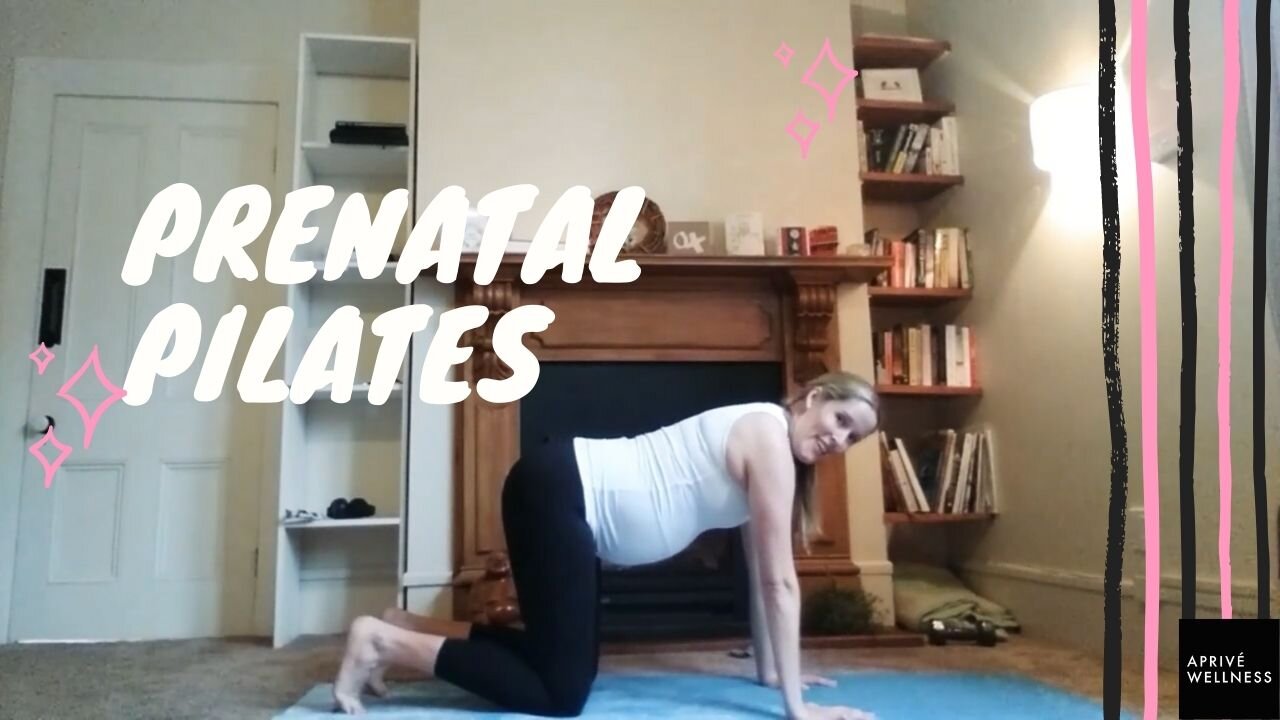
Aprivé Wellness Blog
How to lose weight & the importance of mindset
It's so easy to get stuck thinking about your weight; how to lose it, how to keep it off, and even for some; how to gain it. Whether you're a man, woman or teenager, we've all compared ourselves to billboards and fit-stagrammers. Our image-focused society focuses on appearance so much, it can seem inescapable.
What actually works to help you lose weight?
Comparing yourself to others and shaming yourself every time you stray from your diet or workout regime is a bad habit, and leads to overeating, bad self-esteem, binging, trying crazy unrealistic diets and ensures a lifetime of fluctuating weight. But for some reason, we all do it.
Instead of focusing purely on weight loss though, it's been found that focusing on a positive outcome like better health is way more effective for long-term weightless. Now's the time to stop making yourself feel bad about your weight, and start focusing on the end goal: Living a happier, healthier life.
Focus on healthy habits for long term weight loss
When you focus too much on any outcome, you get exhausted along the way. If you focus on day-to-day goals though, you'll find you reach the same outcome without all the worry. Let's be honest though, it's easy to say you want to lose weight, but harder to stick to your strategies. So instead of putting excessive pressure on yourself like banning yourself from eating cheese and saying you'll run 15 kms every day, make your day-to-day goals more achievable.
Instead of these negative goals:
- I'll fit into my skinny jeans in 4 weeks
- I won't eat carbs for 2 months
Try these positive, achievable, measurable goals
- I'll try to eat 5 veggies everyday
- I'll get moving for 30 minutes 5 days a week, even if it's just a walk down the street and back.
- I'll find new healthy recipes and plan 3 meals each week (leaving less time to eat fast food)
- I'll eat vegetarian meals 5 out of 7 days
- I'll have 5 alcohol-free nights a week
The goals above are weight-loss strategies disguised as wellness strategies! By aiming to enhance your health, you approach weight loss in a positive way rather than from a negative, self-punishing angle.
Goal setting & Technology
One of the best things about technology is it's ability to change our behaviour with cool apps and programs and this works for weight loss and wellness too. My favourite for goals setting is WOOP: Where you set a wish, outcome, obstacle and a plan.
Eg. Wish: To be lighter and healthier
Outcome: I'll feel more confident in my own skin & with my partner
Obstacle: I don't have enough time to shop and cook healthy food
Plan: (when I encounter my obstacle, I'll....)
eg. When I don't have enough time to cook and shop for healthy food I'll...
-Order a weeks' worth of veggies and groceries online, and prepare 3 quick, healthy meals to freeze for the week.
The Woop app is an evidence-based way to stick to your goals, and find actionable ways to make them happen. There are plenty of other fitness and goal-setting apps, but I think Woop seems more authentic. It works with you and your mindset rather than using financial motivation, like apps such as Pact. It's amazing how goals pop into your head when you're using the app - things you didn't even know were important to you.
Goal setting doesn't have to be a mission
The term goal setting sounds like boring terminology used in stuffy conference rooms and tedious hour-long meetings; but it doesn't have to be. Change the word 'goal' to 'ways for me to be healthier,' and the focus and accountability comes back to you.
Weight loss for health not looks
Another important weight loss mindset change: Remember being in a healthy weight range is better for your body, it's not about looking a certain way. Carrying extra weight around your tummy is directly linked to heart problems, while generally carrying extra weight is hard on your joints and can accelerate osteoarthritis and joint degeneration.
Check out another post about the importance of mindset in wellness here.
What do you think are important aspects of weight loss?
Your health as an asset
Drawing parallels between your house and your health may seem strange, but it can help change your attitudes towards your health and wellbeing.
1. Renovations
Knocking down crusty walls and replacing them with open space and modern design breathes new life and value into a property. The same goes for your health; trying new superfoods, workout trends like Soulcycle or Barre, and experiencing new, evidence-based wellness therapies help freshen up and rejuvenate your health and wellbeing.
By adding modern innovation to your diet and workouts, you’re adding value to your health - just like renovations add value to your house.
2. Garage Sales
Getting rid of crap you’ve accumulated in your garage feels liberating! You can do the same with your health by ditching bad habits you’ve accumulated with a once a year ‘garage sale.’ If you started taking up social smoking, why not ditch it before it becomes a real habit? if you have a glass or two of wine every night, try having three alcohol-free nights a week before drinking becomes ingrained in your daily routine.
Little habits add up, so reevaluating your habits and ditching the bad ones leaves you feeling free and fresh to start anew.
3. Regular cleaning
A clean house is every home owner’s dream, but unclogging drains is never fun. The same goes for your health; you want to keep your body clean, and healthy pipes are important. Nutrient absorption is a vital element of health, and this mostly occurs within digestion.
Keeping this system healthy can help fight disease, help combat autoimmune disorders and prevent weight gain.
Probiotics help maintain a healthy pH in your digestive system, and eating natural fibres like psyllium husks, chia seeds, and fresh fruit and veggies can help maintain the motility of your digestive system.
4. Insurance
Insurance always seems like an waste of money, until you desperately need to make a claim. When it comes to health, it often takes that moment of desperation to inspire people to start making ‘payments,’ but you can start before then.
Instead of waiting for a health scare or injury; eat healthy, get regular exercise, meditate and meet up with a counsellor now, instead of later.
Even though these practices won’t stop an injury or health scare from happening, healthy habits help you recover faster when problems do arise.
5. Mandatory taxes and mortgage repayments
We all accept our mortgages and taxes as mandatory payments, but when it comes to our health we still see spending money on wellness as optional.
Instead, consider your gym membership, weekly yoga class and monthly visit to your counsellor or nutritionist as mandatory payments to elevate your health.
This doesn’t mean you’ll never skip a yoga class, but it does help prioritise health in your mind, and inspire you to make better use of your memberships.
Do you consider your health an asset?
Why posture matters & how to improve yours
Good posture has so many important benefits. It’s not only better for your spinal health, it radiates confidence and power, and has been proven to improve the success of negotiations.
If you have a desk job, sitting in a chair for 8 hours leaves almost everyone slumping at 5pm. Then you’re expected to stand elegantly at after-work drinks or walk home, ridden with fatigue.
You can have better posture in just one week though. It all comes down to spinal stability and your core. As a Physio, I’ve had so many patients ask me how to get good posture, so I devised 4 simple steps:
4 ways to get perfect posture
Draw your chin back
Why
A pointed chin brings your neck forward, pulling on the muscles of the neck and shoulders. To compensate for the forward weight shift, your upper back slouches into a kyphosis when you sit. When you’re standing, the effects travel down to your pelvis, and your lower back sways to counterbalance the forward weight shift in your head.
How
- Sit or stand tall with your hands together as though you’re praying.
- Let your fingertips lightly tough the bottom of your chin
- Without lifting your chin off your fingertips, draw your chin back into yourself as through you’re making a double chin.
- Relax a little (because that’s not a good look) and find a point where you’re about to make a double chin but are just a millimetre off- that’s where you want your neck to be.
2. Draw your shoulder blades down and back
Why
The old ‘shoulders back’ mantra doesn’t work - so focus on drawing your shoulder blades gently down and back. The muscles that do this are slow twitch, meaning you only need to slowly and gently activate them, not pull them quickly like you would for a bicep curl.
How
- Sitting or standing, gently imagine you’re gripping an orange between your shoulder blades in the middle of your back - this is where you want your shoulder blades to sit.
- This movement is the same as the end of an upright row you might do at the gym
*If you get a burning pain in your mid back at work, try drawing your shoulder blades down and back, hold for 5 seconds, and relax. Repeat this 10 times every time you check your Instagram and your postural muscles will get stronger and your pain will disappear!
3. Lower your ribcage
Why
Puffing up your rib cage puts pressure on your mid back where your ribs join your spine, plus it looks pretty awkward. By lowering the rib cage flush against your tummy, your spine will be in a better position, and you’ll be sitting or standing taller.
How
- Sitting or standing, place your hand on your ribs, just underneath the underwire of your bra
- Add gentle pressure through your palm and feel your rib cage gently soften into your torso - this is the ideal position for your ribcage
4. Tuck your tailbone
Why
We’re all guilty of letting our back sway when we sit or stand, but this position can lead to lower back pain. When you gently tuck your tailbone under by using your deep abdominals, your spine sits in a nice, neutral position without stressing your lower back vertebrae and nerves.
How
- Sitting or standing tall, place one hand in the small of your back and one hand on your lower abs
- Now imagine a skewer through your pelvis - you’re going to rotate around the skewer
- Gently push with both hands, feel your lower abs tighten, and the sway in your back diminish
Common Questions about Posture
1. Should I sit on a swiss ball at my desk?
You can, but you can still have poor posture on these balls. Plus, when you’re tired there’s no support for your spine. If you really want to use one, I suggest alternating between a good, supportive desk chair and a fit ball every hour or two. Ditch the swiss ball around the 3pm slump.
2. Are heels bad for my posture?
No, but they can increase the sway in your lower back putting pressure on your spine if your core isn’t strong enough. If you can hold position 4 of the posture tips, you’ll be fine!
3. How should I sit at my desk?
A good desk chair is designed to support your spine. Sit with you butt all the way back in the chair, sit up tall so your entire spine is resting on the back rest, and push your chair in all the way under your desk until you’re comfortable. Sitting forward in a chair, or far away from your desk encourages bad posture and leads to back pain.
4. What’s the best workout to improve my posture?
Pilates, Barre and dance will help your posture improve. They emphasise good spinal stability and elongation of the spine, so you’ll be standing taller in no time.
Next time you're sitting at your desk, try these 4 postural tips to radiate more confidence and protect your spine. Good luck!
“A good stance and posture reflect a proper state of mind.” - Morihei Ueshiba
What a Tibetan Monk taught me about Wellness
I’m no expert on Buddhism, but something about the inherent philosophies of the Eastern religion resonates with my holistic view on health and wellness. I’ve been to a handful of Dharma chats by Buddhist monks in Asia, and am always captivated by their jovial spirits and useful lessons.
Recently I attended a talk by The Fifth Amnyi Trulchung Rinpoche, a visiting Buddhist monk from Tibet, passionate to help make people live happier lives. While I believe wellness has its roots in a range of philosophies and schools including medicine, naturopathy, meditation, neurology and sports science, I’m confident this clever man’s lessons can apply to everyone in their business and personal lives.
1. Spend most of your time on goals that are important to you
The visiting monk told us a story from Buddhist text about a man who was trying to rub down a steel pipe to make a needle. He was so obsessed with it, he wouldn’t stop and realise how frivolous it was - he would never get it down to the size of a needle in his lifetime. This man's main life goal was to improve his meditation, but he spent almost all his time trying to make this needle. I was told this applies to everyone: If you have a goal - something you want to improve - spend all your time on that. Don’t let trivial, meaningless things get in the way of your goal because it’s so easy to get distracted. And I'll bet the man in the story didn't have the distraction of social media like we do now!
This applies to wellness: If you want to lose weight and be fitter, devote your time to working out, even if it's just a walk around the block. Instead of checking your social media and spending two hours a day watching reality TV, you can devote this time to your goal so you achieve it faster. It's hard but worth it!
2. Don’t just focus on results, engage in the journey
It's like the old "it's about the journey not the destination" saying. Amnyi Trulchung Rinpoche told us too many people focus on the results of something, instead of the practice itself. He said if they immediately transfer their energy from the outcome to the practice, the practice immediately gets better. In the end then too, the outcome is better! While he was talking about getting better at meditation, this philosophy works for any skill and any business.
This applies to wellness: If you want to eat better, instead of spending ten minutes lamenting your weight on the scales and berating yourself over the brownie you ate at lunch - redirect that energy to sourcing local produce and healthy recipes. Take time and pride in creating healthy, nutritious-filled dishes and you’ll find you’ll eat better overall. Plus! It’s much better to spend your energy on something positive rather than negative - your self esteem will thank you for it.
3. Wake up with happy thoughts
Everyday, Amnyi Trulchung Rinpoche wakes up and says to himself he hopes every sentient being lives happily and healthily and without suffering. He told us he knows this doesn’t mean every living thing in the world will have the best day ever! But he said waking up with a positive mindset and wishing others and yourself well is a really useful way to start the day - and it lingers throughout the day.
This applies to wellness: If you’ve ever been to yoga, you know some instructors will finish the lesson with a similar statement, before the requisite “Namaste.”Rather than waiting until yoga, try and think a positive thought first thing every morning. It can help you start the day in a positive mindset, and better prepares you to combat stress throughout that day.
4. Don't disregard people because they live differently to you
During the session, this charming monk told us about a monk who was famous in Tibet in the 1950's. He was dismissed by Tibetan society and officials for being a disloyal monk because he drank and smoked occasionally, and even had girlfriends. Unfortunately though, he was also incredibly clever, and was one of the few prominent men in the country who spoke English. At a time when a seat at the UN could have determined Tibet's future, the one man who spoke English and would have been the ideal choice was shunned by his country. The monk told us the seat at the UN remained empty, and we all know what happened next.
This applies to wellness: Different therapies, techniques and philosophies appeal to different people, and just because you may not agree that Bikram yoga is worthwhile, someone else will think it's great! And plenty do. Wellness is about promoting mind and body wellbeing, so rather than dismiss other schools of thought, see what you can learn from them.
As a Physio I have a medical background and used to be cynical about some alternative therapies, but I can't tell you how many patients have seen incredible results from them that no other therapy or pill could provide. One woman was cured of chronic anxiety after a number of sessions of Bowen therapy. You never know what you could learn, so keep your heart open to hearing about different people's wellness goals.
I’m no expert, but I know wellness is multi-faceted. If we can all integrate mindfulness to make clearer, better decisions about how we spend our time, who we spend it with, and what our goals are - we’re one step closer to living well!
What have you learned from someone that has helped you come closer to your wellness goals?
Exciting news!
Spa Wellness has invited me to join their exclusive list of holistic experts
The brilliant team at Spa Wellness have included me, Caitlin Reid, in their portfolio of holistic experts and I'm thrilled!
What does being a holistic expert mean?
It means I'm featured alongside some incredible healers and holistic therapists. I'm so honoured to be included with these wonderful experts.
I'm thrilled to be included in this list of experts, and would love to hear from you about how I can help you create movement therapy programs for you luxury retreat or hotel.
I can work with you to create a movement therapy program to suit your clientele, from an exclusive in-room workout for luxury hotels to a water therapy fitness program at a beach retreat.
I also help train fitness professionals and massage therapists on the newest innovations in the industry.
Aprivé Wellness Writes for Hip & Healthy UK
Hip & Healthy UK is a beautiful online wellness magazine - and they asked Aprivé Wellness to write some expert articles.
The 10 Minute Workout To Ease Lower Back Pain
If you’re desk-bound most of the day, chances are you’ve experienced lower back pain. Check out these simple exercises to help ease discomfort in this area and enhance your workday. You can even do some of them right at your desk!
*Please remember, this article doesn’t address all low back pain conditions, and always see a good Physiotherapist in conjunction with this advice.
Sitting and Our Spines
Our spines aren’t designed for a sedentary lifestyle, so sitting at a desk all day plays havoc on our lower backs, particularly when we have bad posture (which we can all be guilty of at 3pm!) Long periods of sitting puts pressure on the lumbar spine when unsupported and tightens the hip muscles, pulling the pelvis into a forward position, increasing the arch of the lower back and causing it to sway. A sway back is a vulnerable position for our spines, and causes pain that can become unbearable after a long day at a desk.
Instead of reaching for the painkillers, try this simple workout to ease your low back pain:






















Learn when it’s safe to start walking after a C section, how to ease back into movement, and what to expect in your recovery timeline.